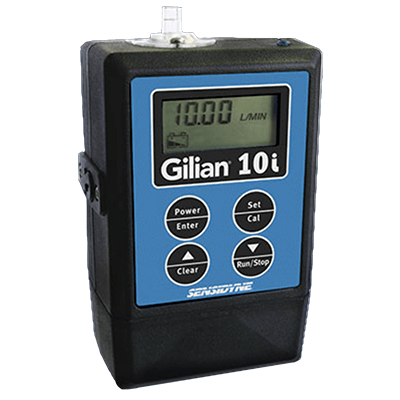What Is a Sampling Pump?

A sampling pump is a pump used to obtain a sample of a liquid or gas.
It makes it possible to take a measurement target to quantify the target compound, and to determine the compound concentration from the volume of the target collected and the compound amount. Generally, this concentration is expressed in units such as ppm.
Uses of Sampling Pumps
Sampling pumps are used in a variety of industries and fields. The following are some examples of applications for sampling pumps:
1. Environmental Surveys
Sampling pumps are used for air and soil surveys and to obtain samples of wastes, chemicals, and other materials. These samples are used to confirm the degree of environmental pollution and that factory effluent is below standard values.
Air pollution surveys use sampling pumps to sample minute particles and toxic substances in the air. Water quality surveys also evaluate the concentration of contaminants in water. Soil surveys can evaluate the concentration of contaminants in the soil.
2. Medical Diagnosis
It is used to collect biological samples such as blood and breath from patients. These samples are used for testing and diagnosis.
3. Industrial Equipment Control
Used to obtain samples from production lines for chemical process control and quality control. Besides the chemical industry, they are also widely used in the food and beverage industry to measure microorganisms on production lines, as well as physical and chemical properties of products.
4. Research and Development
Used by researchers to study substances, compounds, microorganisms, chemical reactions, biochemical reactions, etc. In research applications, it is important to collect accurate and reliable data. Therefore, it is important to select the appropriate sampling pump and the proper sampling technique.
Principle of Sampling Pumps
The principle of a sampling pump is similar to that of a regular pump. By moving the piston or diaphragm inside the pump, the pressure inside the pump is changed. The pressure change allows the pump to take a sample of liquid or gas.
For liquids, the sample is aspirated through the pump using a bottle or similar device equipped with two valves, one for suction and the other for discharge. For gases, on the other hand, the sample is obtained through the inlet and the gas is compressed to a specific volume inside the pump. The valve on the pump is then switched to release the gas into the sampling container.
The accuracy and reliability of a sampling pump is determined by the design and function of the pump. High-quality sampling pumps are often more accurate and stable. In addition, various factors, such as the pump head material and seal material of the pump, affect the pump’s performance.
Types of Sampling Pumps
Various types of sampling pumps exist, depending on the application and other factors.
Depending on the power source, there are manual pumps and electric pumps. Manual pumps are operated manually to take samples into collection containers such as vessels or sampling bags. Electric pumps use electricity to take samples.
In addition, there are the following types of sampling pumps depending on the application:
1. Handheld Sampling Pumps
This is a small and portable sampling pump that can be worn by an individual. It is mainly used to measure workers’ radiation dose.
When workers work long hours, sampling for long periods of time is necessary. Many personal sampling pumps are battery-powered, and there are products that can perform continuous sampling for extended periods of time.
2. Air Volume Sampler
This pump is used to collect minute particles and microorganisms in the air. It can take in a certain volume of air.
Air volume samplers play an important role in the investigation of microparticles. Airborne microparticles can have a negative impact on the human body and are important data for environmental studies and health management. Air volume samplers can be used to accurately assess the concentration of microparticles, which is useful for health management and environmental protection.
3. High Volume Sampler
This pump is designed to take in a large volume of air and measure the concentration of microparticles with high accuracy. It is capable of sampling a larger flow rate than the air volume sampler. However, most air volume samplers are capable of capturing finer particles.